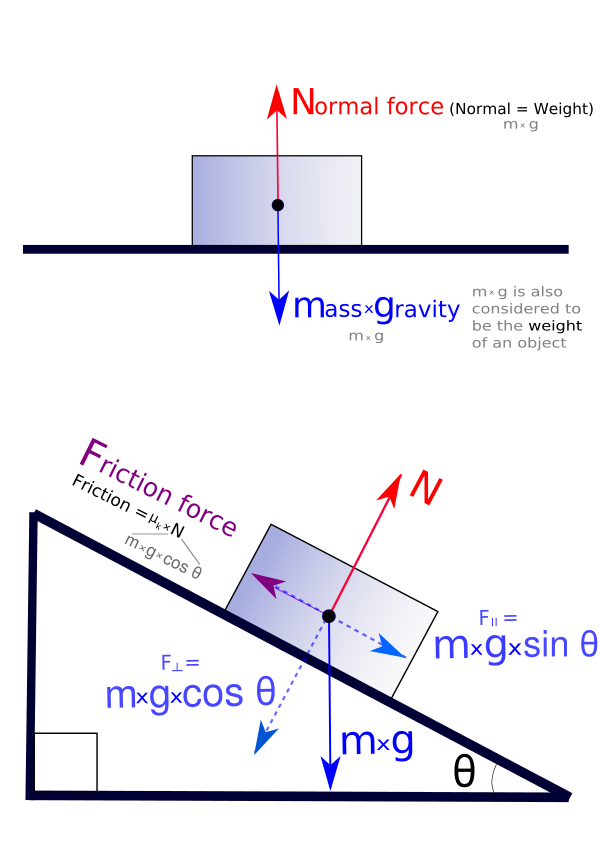Guide to Game Development/Theory/Physical motion/Forces
Understanding Sir Isaac Newton
Newton is best known for the apple. The apple hit his head allowing him to have his "eureka" moment about gravity. He was the Lucasian Professor of Mathematics at the University of Cambridge. It is recognised the world around as one of the highest and most prestigious academic posts. Newton is responsible for our understanding of basic motion, forces as well as contributing to optics. He is joint credited for the invention of calculus with Gottfried Leibniz.
Newton's Laws of Motion
Newton's First Law
Template:Dbox What the definition stated above means is that if an object was left alone, with no external forces acting on it (that's the closed system part) then it will remain how it is. It will only change velocity when a force has been applied to it.
Newton's Second Law
This is the law that is probably most well known by non-physicists and non-mathematicians.
However, strictly speaking, the above equation is a branch off of the Second Law.
Template:Dbox
What does this mean? Well you need a basic knowledge of calculus and to have read up on suvat's.
The rate of change of momentum basically means the differential of momentum with respect to time. Where it says "Resultant Force" it means the overall force of a system. If a car is dragging a trailer, the overall force is calculated using this law.
The following derivation follows steps on how to get to the renowned .
Momentum is given by .
Provided that the object accelerates uniformly, this equation works.
Newton's Third Law
Template:Dbox This is what the law is in layman's terms. The law is talking about forces in physics rather than actions and reactions in chemistry. This law is what gives rise to "normal forces", or "reaction forces". These forces are directly opposite to the initial force. Template:Sbox So what does this mean? Imagine that "Object A" is a cup on a table and the table was "Object B". When you look at the cup, it just sits on the table. We know that the cup has a force acting down due to gravity, so why isn't it falling through the table? This answer is that the table is exerting a force that is equal to the weight of the cup but in the opposite direction. This opposite force is the electrostatic repulsion of electron in atoms but we won't get into detail with particle physics. All you need to know is
- The cup has a weight acting down
- The table has a reaction force to the cup's weight that is acting directly opposite to the cup's weight.
Newton's Laws in Practice
Resolving forces
Template:Dbox An example of equilibrium would be when there are two forces on the left (10N and 20N) and there is one force on the right (30N). 10N + 20N = 30N.

To find the weight/downwards force of an object you need to use:
If the object is resting on a surface, then there is an upwards force known as the normal reaction force, this force is equal to the weight.
A surface has a coefficient of friction() which will greater than or equal to 0 (In reality a surface won't be exactly 0, but for simulation it's fine to say it is if it's close enough/if friction should be ignored). The resistance force is calculated by:
